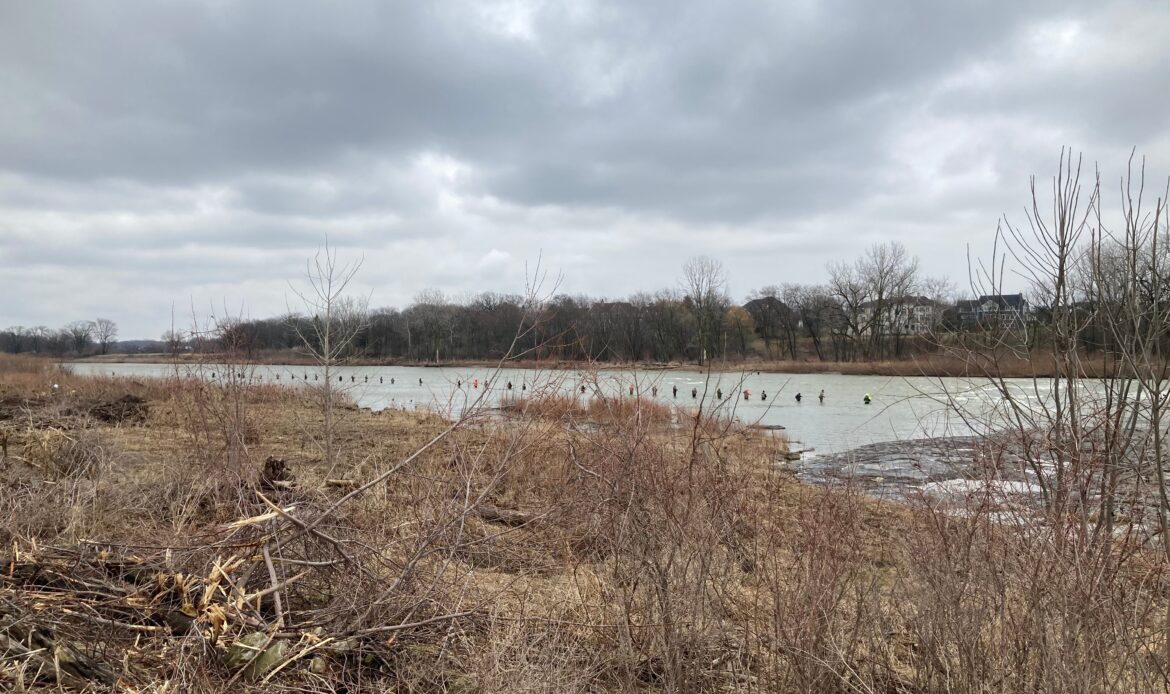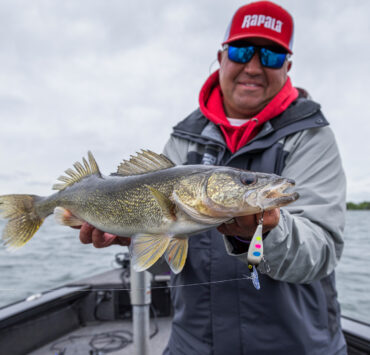What you need to know about the Lake Erie spring walleye spawn.
In Springing Into Lake Erie Walleye Madness: Part 1, we met Zach Amidon (PhD Fisheries Biology / Ecology at the University Of Toledo), who waded us through his local bait and tackle and the reasons why Lake Erie’s Western Basin and major river tributaries create an ideal habitat for spawning walleye. In part 2, he grapples with the soul of Toledo, Ohio; defines walleye “hatch;” and takes us on the Midwestern cultural fishing experience of a lifetime in the world’s walleye capital.
A “Good Hatch” in the World’s “Okay-est” Place
“Fast forward to 2023, with six of the past nine walleye hatches above average and five straight years of angler harvest rates higher than any single year in the 1980s. This is truly the golden age or “good ol’ days,” better than any era we thought we’d ever see again.” – Travis Hartman, Fisheries Biologist at Ohio DNR Division of Wildlife
April 5, 2023: Zach refers to Toledo as the “okay-est” place in the world. He says, “It’s a totally unremarkable place, which is both a good and bad thing.” We both agree, however, that’s definitely not the case if you’re a hatching walleye larvae, a trophy walleye, or an angler in pursuit of the Midwest’s favorite food fish.If you’re anywhere in that walleye chain, Toledo and its surrounding environments are paradise.
Amidon explains the walleye’s lifecycle: “When people say ‘hatch,’ they often refer to recruitment. Adults spawn in the spring, so right now, as we speak, it is near peak spawn. Those eggs will hatch in about a month, and then those larvae will grow throughout the summer — which is called the growing season — right to the fall, and that is when the Ohio DNR samples them determining whether or not there was a ‘good hatch.'”
“Based on the most recent data, we’re going to have a lot of fish to catch in two or three years”. Amidon references the Lake Erie Walleye Task Group Report, a collaborative, State of the (Erie walleye) Union document put together by fisheries managers and researchers from the four states that border the lake (Ohio, Pennsylvania, New York, Michigan) and Canada. This year’s hatch adds to six seasons of solid walleye recruitment in the past nine years, which Amidon admits is “crazy.” He states, “Usually, we get one or two good years every ten years, but now we’ve had multiple years of good survival. Since we have these back-to-back-to-back peak years, those fish are old enough that we’re catching them now.”
The Fishing Experience of a Lifetime
“If you want to go to the mecca for walleye—the largest walleye population in the world—to have the best walleye fishing of your life—if you time it right and plan it right—you can come to Lake Erie and do that. If you come in the spring or fall on a calm day, you have a chance at a fish of a lifetime, and in the summer, you can catch more walleye on the lake in one day than you’ve ever seen anywhere else. Depending on what you want, you can tailor a trip to Lake Erie to experience something you’ve never experienced and may perhaps never experience again.” – Travis Hartman, Fisheries Biologist at Ohio DNR Division of Wildlife
Finally, the conversation turns to fishing. Zach’s just been out for the first time this spring, donning his stretchy new neoprenes and casting a curly tail jig. He says, “Just the other day, I was on the Maumee, near what they call Jerome rapids. The conditions were perfect. It was supposed to rain in the morning, but it didn’t. The water levels were low enough, it wasn’t too muddy, and you could stand in the river and fish. It was shoulder-to-shoulder fishing. One fishing pole’s length away, at best, I’d say. I caught two fish in five casts. Actually, I hooked three, but one hit the guy next to me and got off the hook. Everyone is casting and either pulling in a fish or someone else’s line.”

Was it “The fishing experience of a lifetime?” Zach laughs, “Well… that’s one way to put it.” He clarifies that in all his years living and fishing in Toledo, it was “the busiest he’d ever seen” and that usually “it’s not so bad.” Typically, midweek, he’s able to find a spot and a bit of solitude without worrying about snagging some Michigander’s boot. There’s a good reason all those people come here to fish year after year; hooking three fish in five casts is about as good as walleye fishing gets if you don’t mind a crowd.
Everyone fishes a Carolina rig in the rivers—a bullet head weight above a swivel and a section of leader tied to a floating jig head tipped with a soft-plastic curly tail. “On the first day, I had the weight about three feet above the jig; on the second day, it was about five feet above. It all depends on how fast the water’s flowing.”
Zach paints the scene: You’re standing jam-packed sardine-can style, parallel to the river, casting upstream. You let the rig drift downstream, the weight bouncing and dragging on the bottom as the floating jig head suspends above. “You often don’t know if the walleye is on. Sometimes they’ll grab it and run upstream, and it’s like, okay! Something’s different here; I got a fish on. But it can also be hard to tell because if they do grab it and run upstream, your line might go slack. So it’s not like, whoa! I got a fish. It’s more like my line went slack… Maybe that’s a fish, then you feel them, and they kind of hook themselves. It’s sometimes difficult to tell if it’s a fish or someone else’s line.”
Experiencing Maumee River walleye madness and Toledo, the “okay-est” place on the planet, holds a certain appeal if you’re an American angler. Fishermen get it: snow on the ground, crammed bait shop parking lots, fields filled with RV’s, the unique hug of stretchy neoprenes, tossing a greasy curly tail jig in rhythm with your neighbors, reeling in a fish nearly every other cast, the taste of beer and battered white flesh at the end of a long cold, foggy April Ohio slog. The spectacle calls us as much as the fish.



